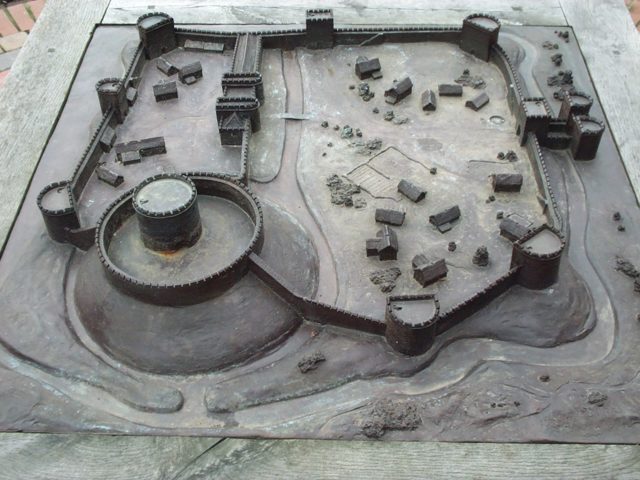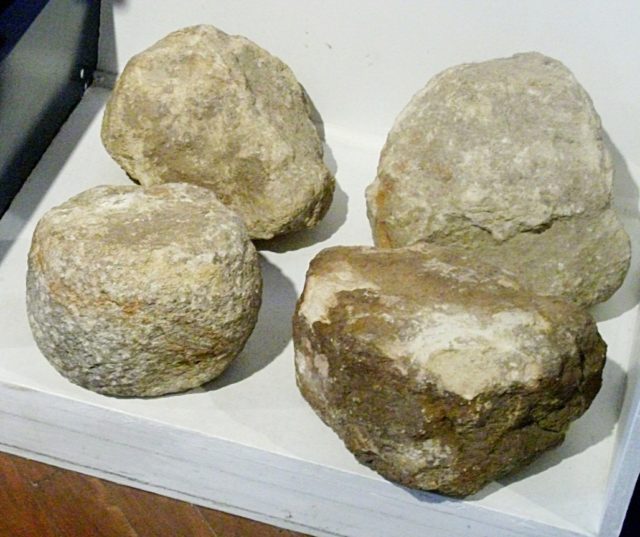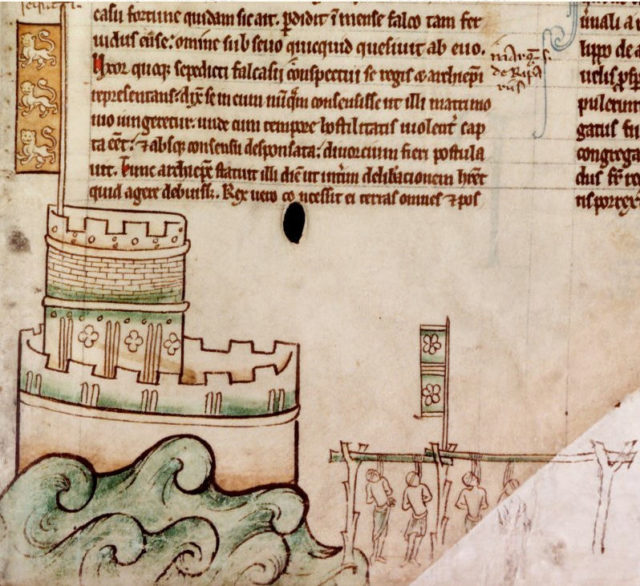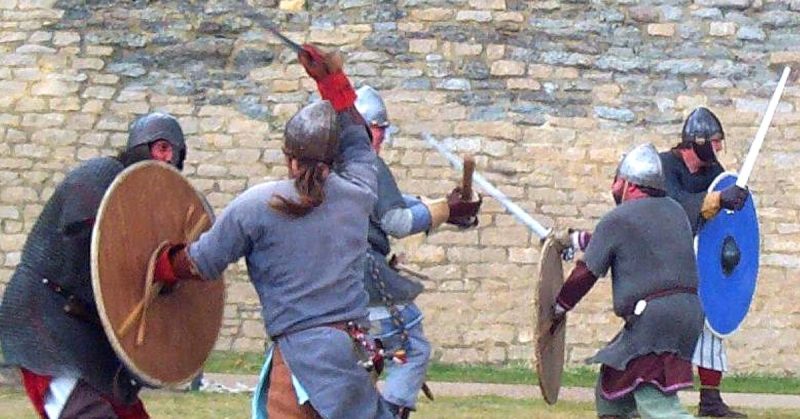Civil wars and revolts were common in medieval England. Without elections to decide between opposing leaders and policies, violence became the answer.
As in modern politics, some acts of opposition were more effective than others. The de Breauté revolt, which consisted almost entirely of the siege of Bedford Castle, was one of the least effective.
A Strong and Strategically Important Castle
Since the Dark Ages, there have been fortifications at Bedford.
Sited on the Great Ouse River, it controlled river traffic and overland travel to London, less than fifty miles south. It was strategically significant.
The Anglo-Saxons built a defensive position at Bedford. It is likely the Normans did the same following their invasion, but it was not until the 1130s that a stone castle was built on the site.
By 1224, there was a small but strong castle at Bedford. Its solid stone keep was raised above the surrounding area by a motte. Ditches and ring walls enclosed both the inner and outer baileys. A barbican and a water gate controlled access to the castle.

Tumultuous Times
1224 was a tumultuous year. King Henry III, had come to the throne aged only nine. Now seventeen, he took control of the country, facing huge challenges. A treaty with France had lapsed, and the French were threatening his lands on the continent. Welsh King Llywelyn ap Iorweth was raiding in parts of England. Many castles were controlled not by the King but by lords who had seized them during the civil wars of his father, King John.
Henry needed to assert his authority.
Falkes and William de Breauté
Falkes de Breauté had other plans.
Although he had supported King John during the revolt and later helped Henry crush an uprising in London, he valued his own independence and authority. He controlled Bedford castle and did not want to give it up.
Together with his brother William, Falkes planned to stir rebellion. If he succeeded, he could gain hugely in influence. If he failed, he expected the same leniency with which other recent rebels had been treated.
To kick things off, William rode to Dunstable, where three royal justices were hearing a case against his brother. He kidnapped one of them, Henry de Braibroc, and carried him away to Bedford.
Massing Forces
Their timing was badly misjudged. King Henry was only 20 miles away, holding court at Northampton. He rushed to rally his forces. Three days after hearing of the kidnapping, he was besieging Bedford Castle.
Henry called in all the resources he needed for an overwhelming siege. Miners from the Forest of Dean. A master carpenter with all his tools and team from Windsor. Materials for the carpenters to build siege engines. 15,000 crossbow bolts from Dorset. Soldiers from all over the realm.
The rising by discontented nobles that Falkes had hoped for never came. He could not reach Bedford and ended up on the run.
Preparation and Bombardment
William prepared for the siege as best he could. He knocked down two nearby churches to deprive royal forces of those vantage points.
When the royal army arrived, they set to work building stone throwers all around the castle; it is unclear whether these were mangonels or larger trebuchets. Two siege towers were also constructed so crossbowmen could see over the walls and shoot the defenders. Defenses were built to protect miners approaching the walls.

First Assaults
The artillery created gaps in the outer walls. The barbican was taken and soldiers poured through the first breach in the walls.
The men of nearby Dunstable, where William de Breauté had committed his crime, were among the first through. They suffered heavy casualties but also did well from the looting that ensued. Their plunder included cows, pigs, and crossbows.
Mining
The slowest part of the siege now began.
The carpenters built a cat; a mobile shed to protect soldiers from enemy fire. Under cover of this, the miners tunneled beneath the walls of the inner bailey. 200 more pickaxes were ordered over the course of July and August, as those they had were worn out.
Held up with wooden struts, the mine ran all the way under the walls. Once it was finished, the miners withdrew and set fire to the struts. The ground below the wall collapsed as the tunnel gave way. The wall was breached and the attackers poured through, seizing the inner bailey.
The men of Dunstable were again at the fore. Ten were captured when, in the intensity of the battle they unwisely tried to storm the keep.
The Final Attack
Only the keep remained, and this was the most difficult part. Just getting the cat up against its walls was a huge challenge. Many men died getting it into place.
This time, the mining progressed more quickly. On August 14, the miners lit the supports of the completed tunnel. It caved in, creating a huge crack in the wall of the keep. Smoke poured in, choking the defenders.

Surrender and Punishment
William de Breauté knew that all was lost. His forces could not stand against another assault and they had nowhere left to retreat to. He released his prisoners, raised the royal banner above the castle, and led his men out to surrender.
The Breauté brothers whole plan had hinged upon the King’s leniency, but his mercy was at an end. An example had to be made to dissuade future rebels.
A gallows was built in front of the keep. William and all his men were hung.
Falkes fared slightly better. After two years in exile, he died in 1226, allegedly from a poisoned fish.
King Henry III had stamped his authority on his realm although it was not enough to prevent all revolts. Thirty-five years later, Simon de Montfort rallied the sort of support Falkes de Beauté could only have dreamt of.
Meanwhile, Bedford castle stood exposed, a tribute to what a determined besieger could achieve.
Source:
Owen Rees (2016), “Henry III Versus Falkes de Breauté”, in Medieval Warfare Vol VI issue 5.
